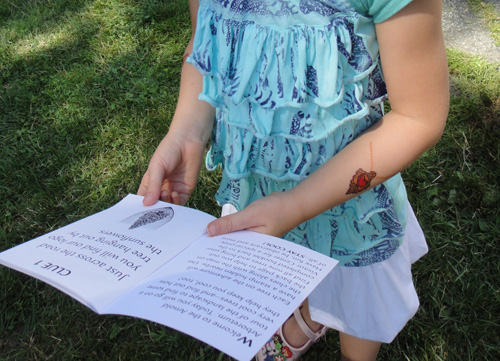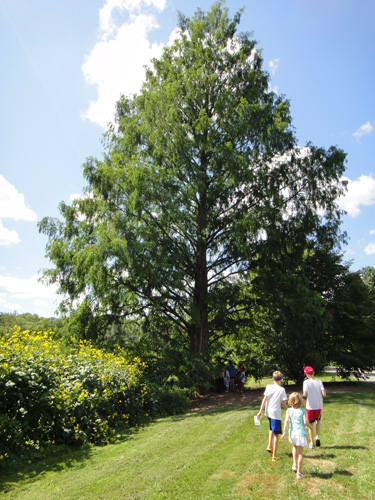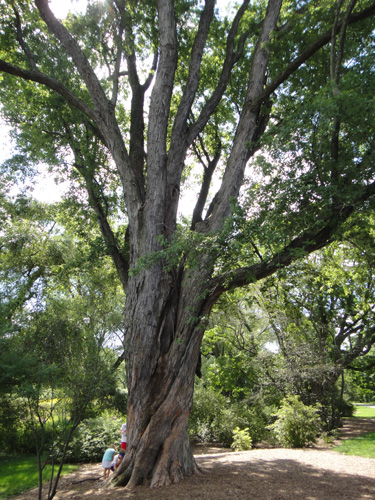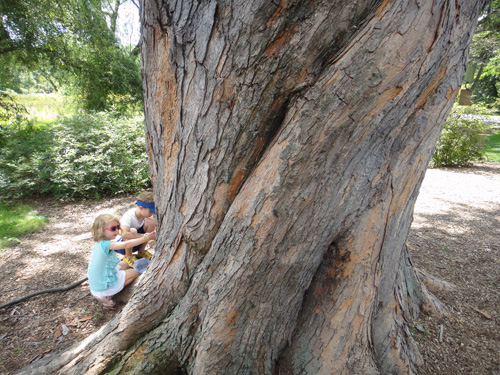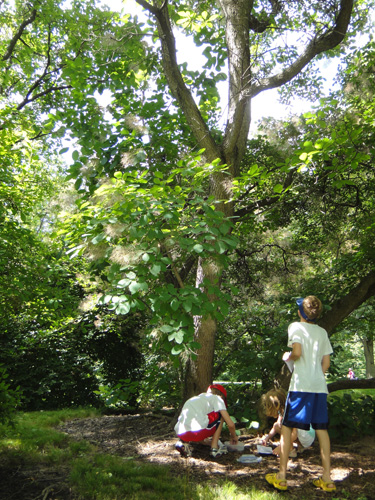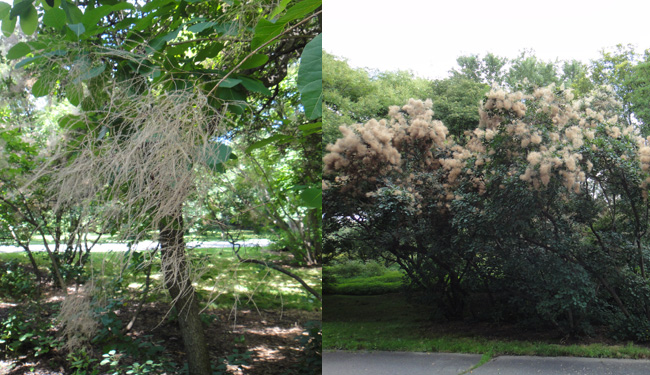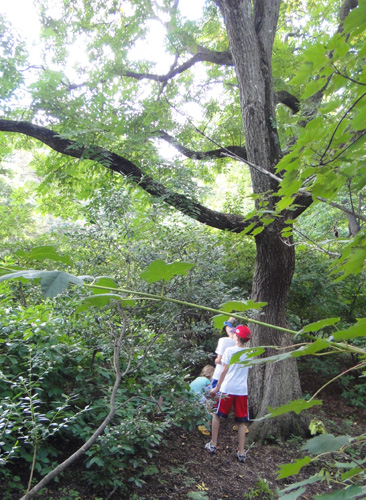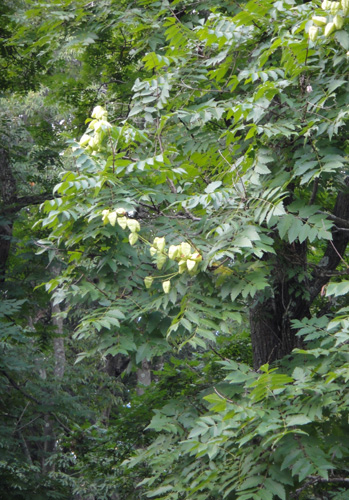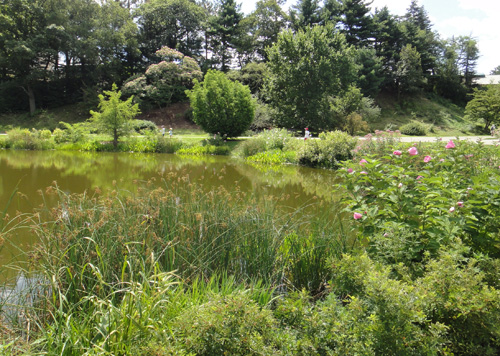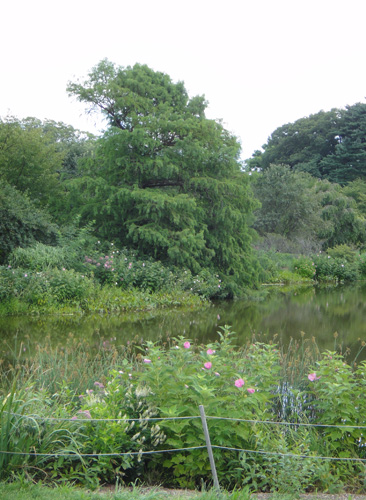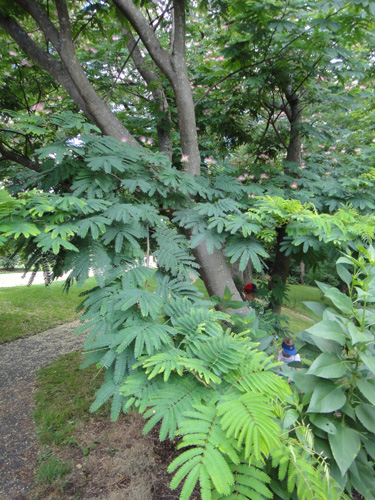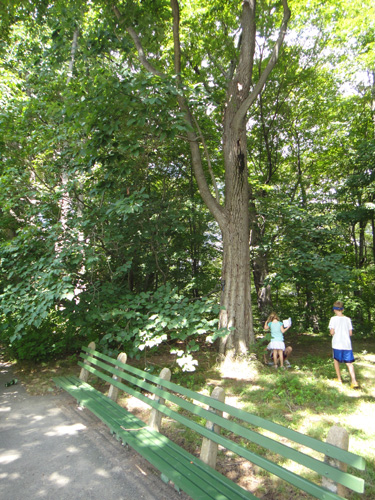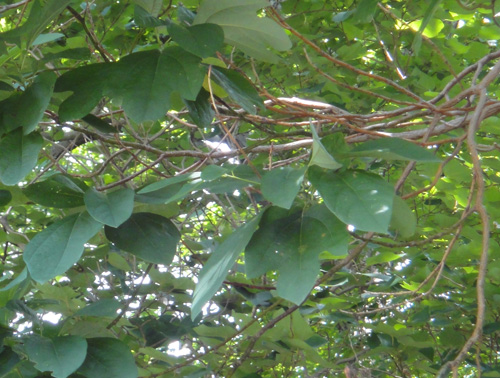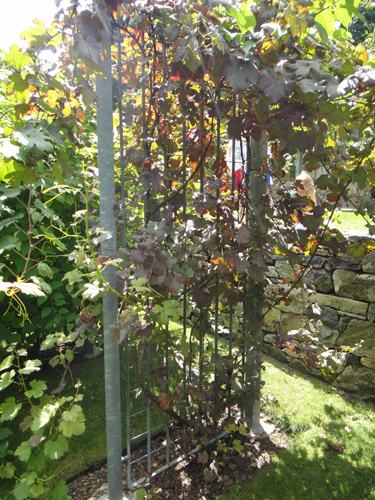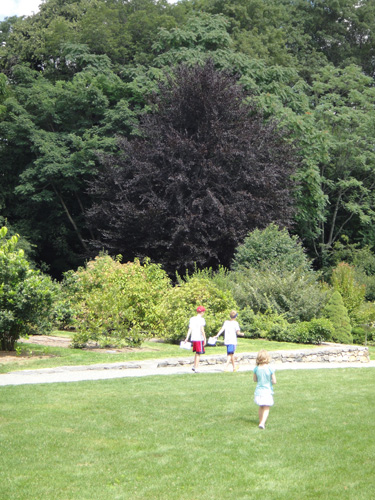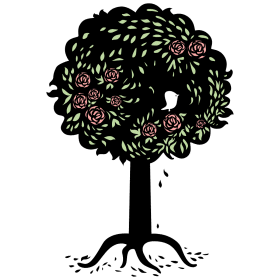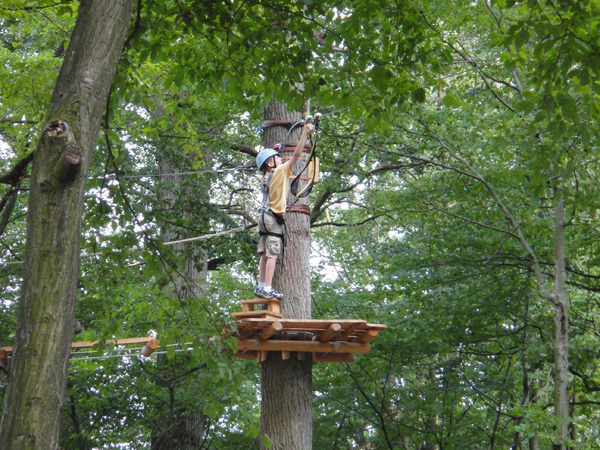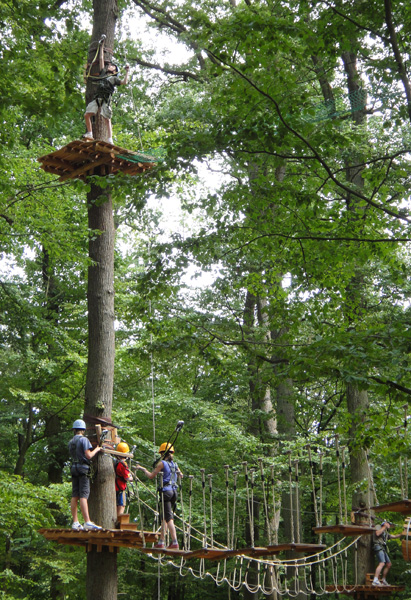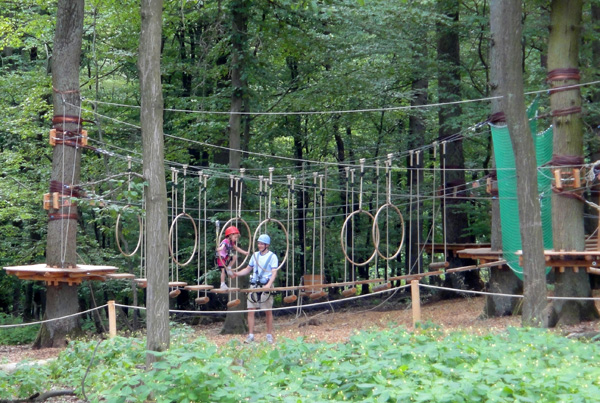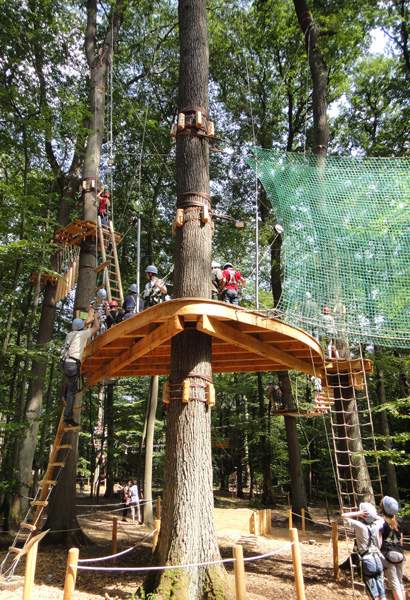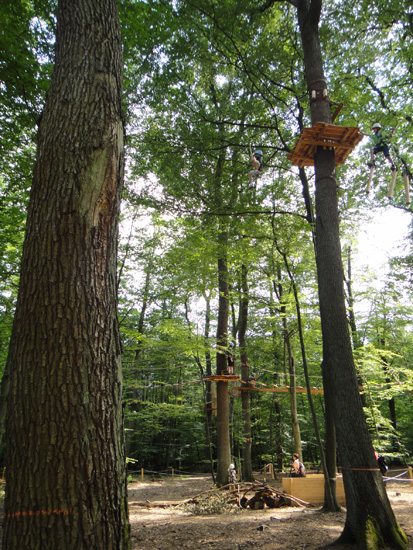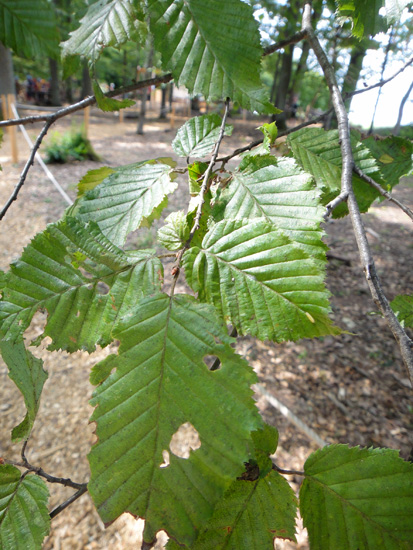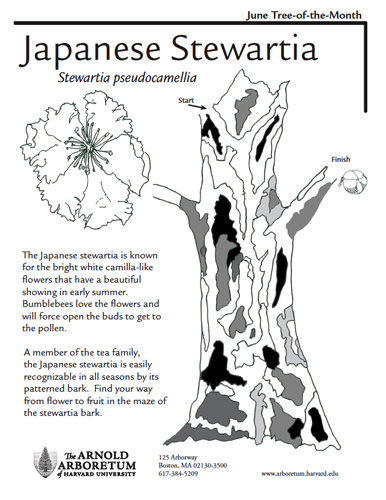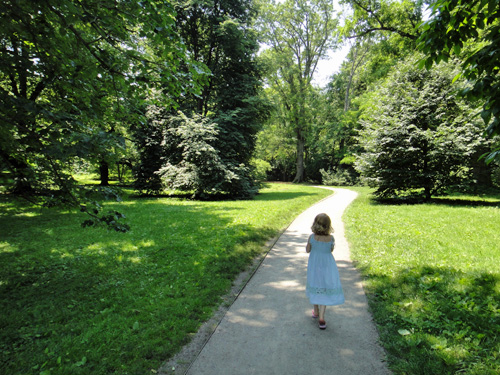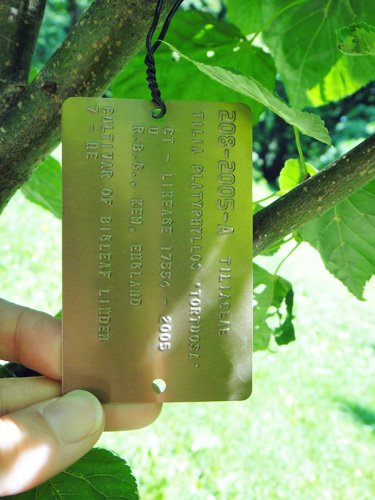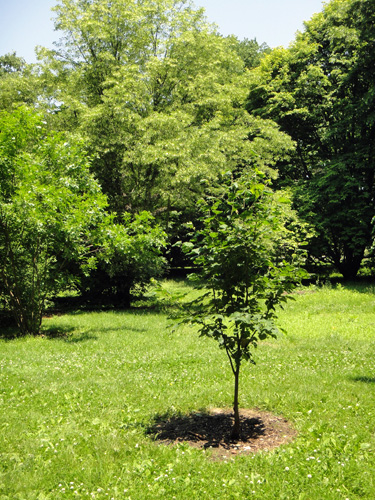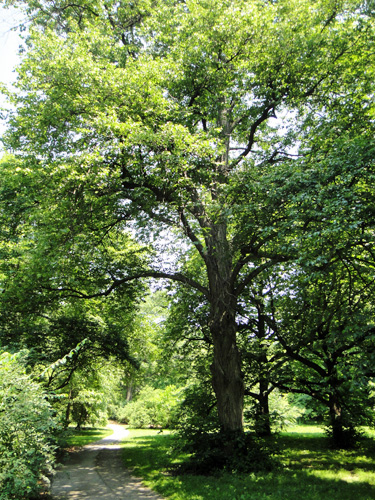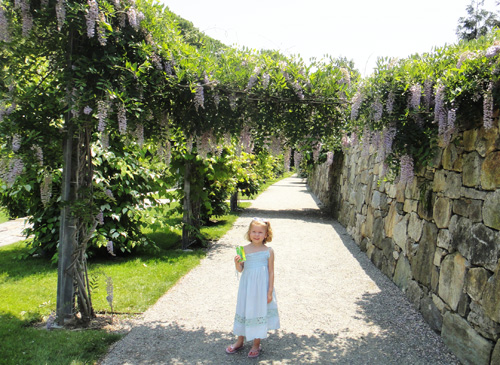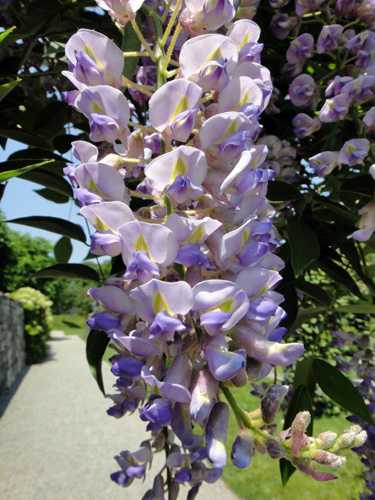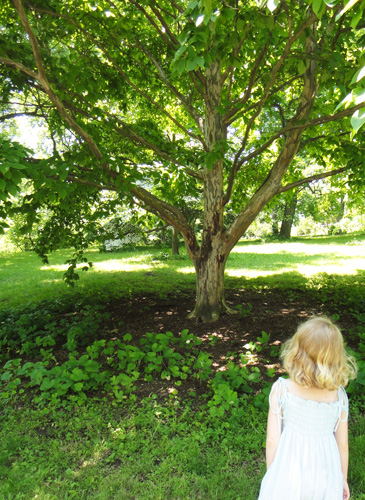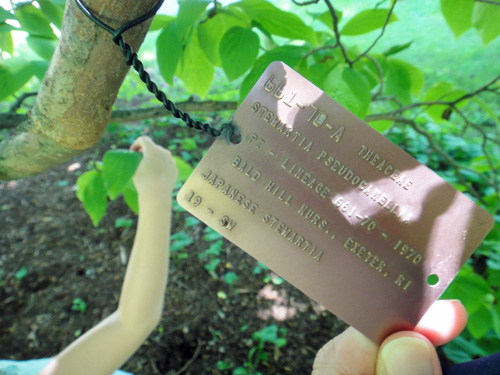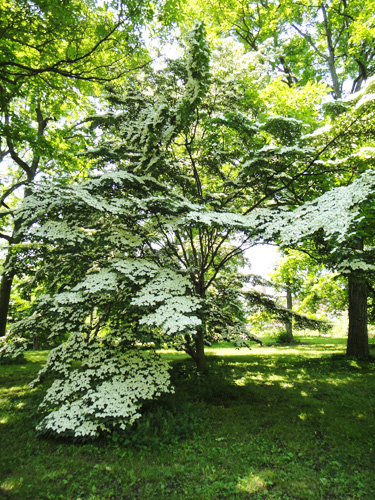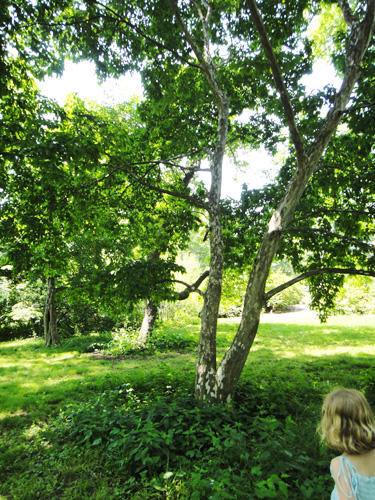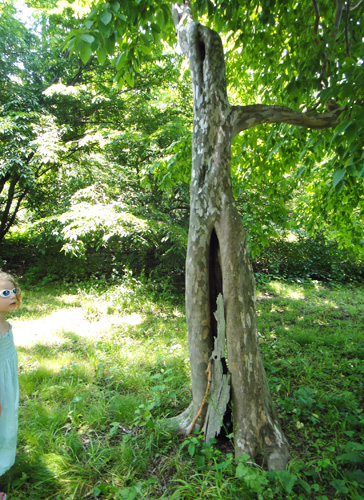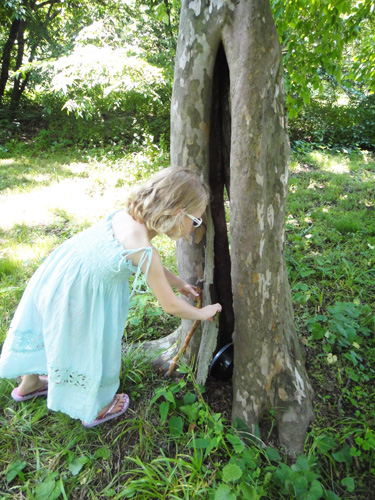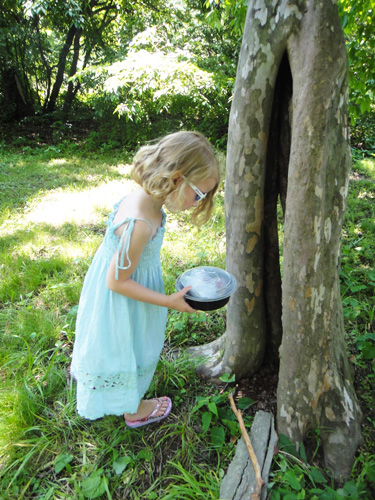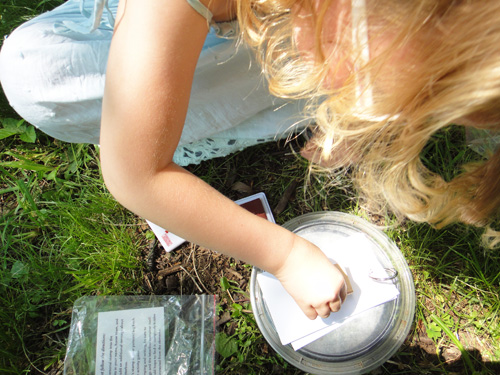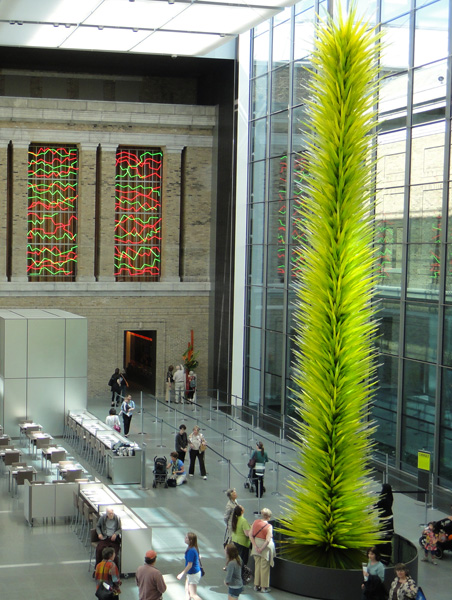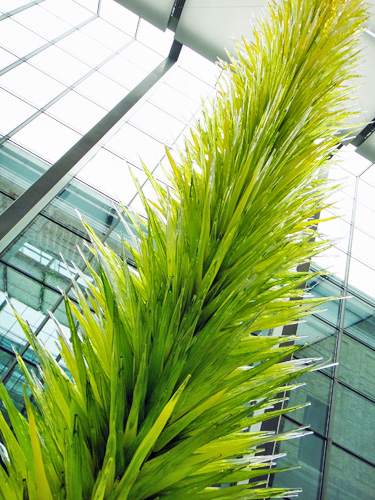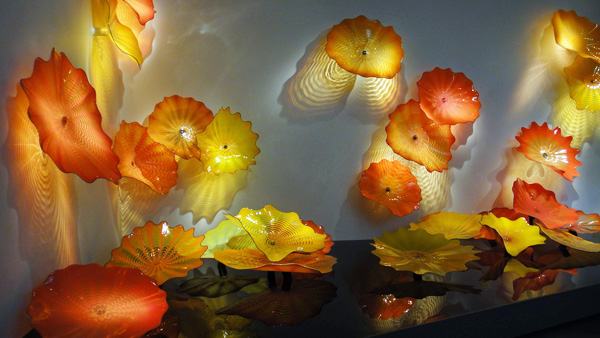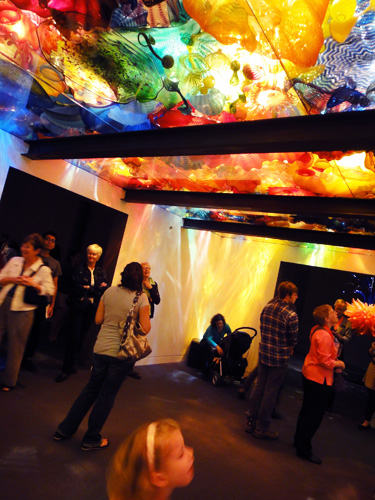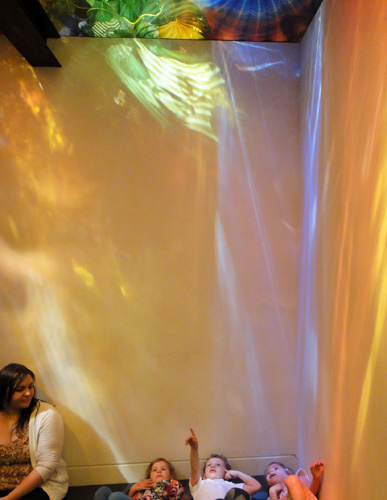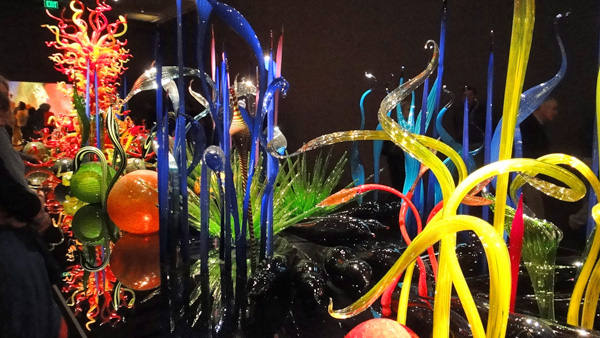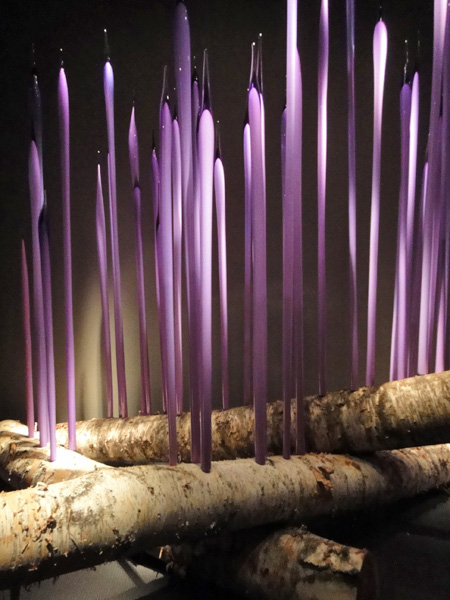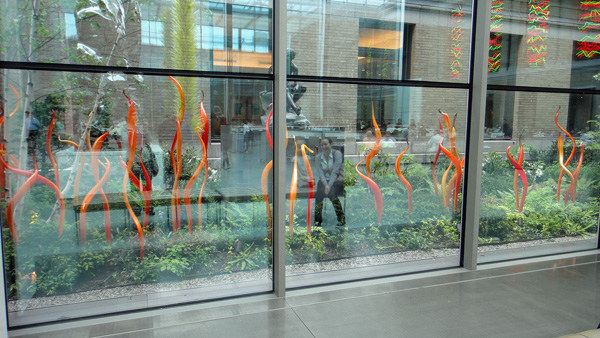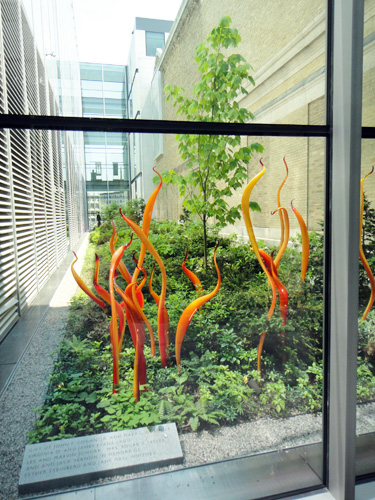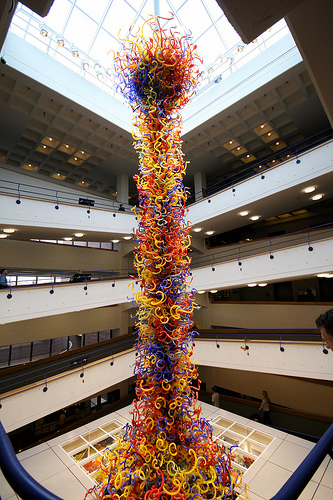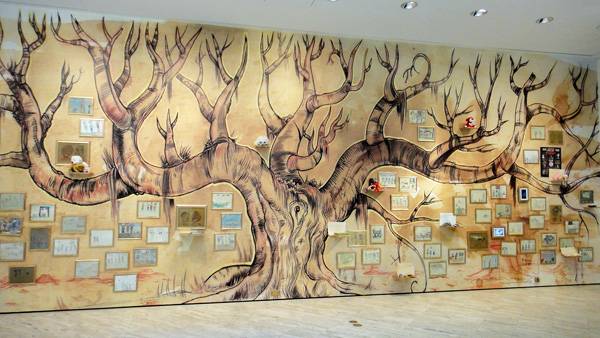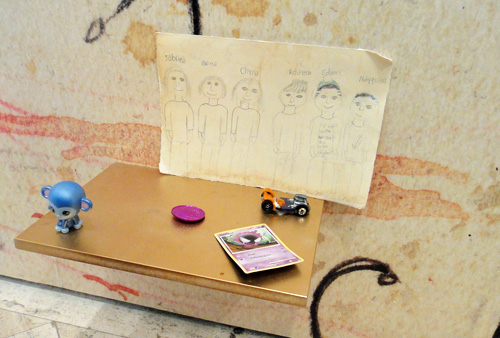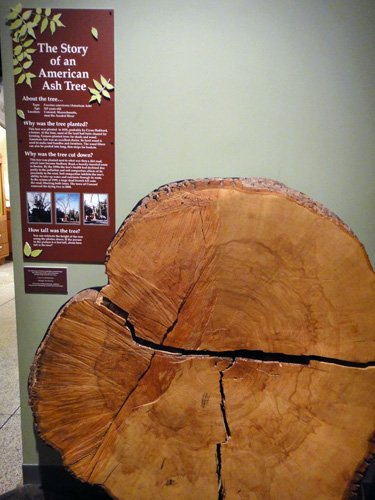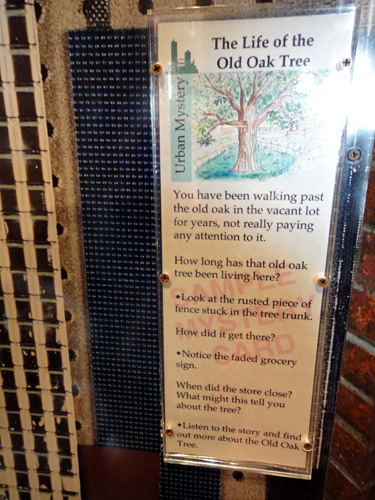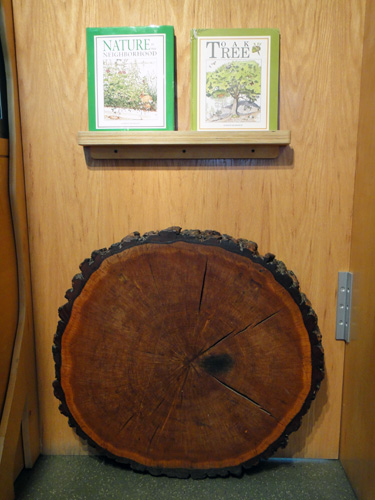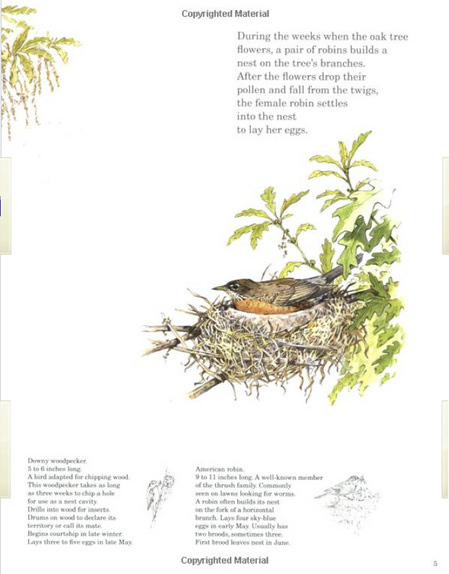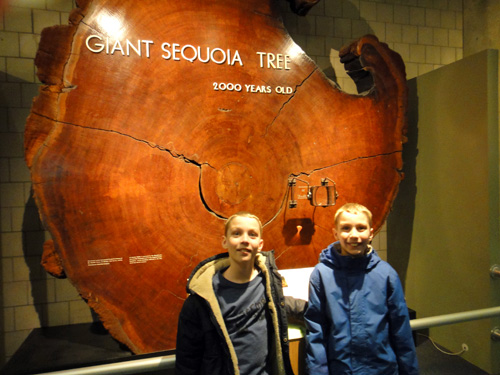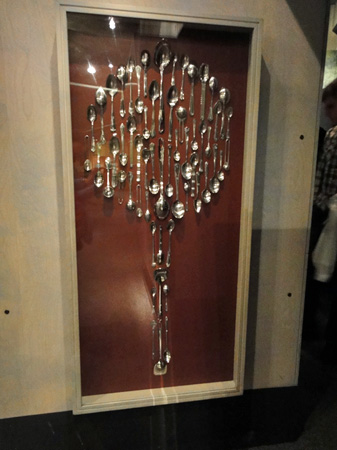Last weekend, we went to New York City to visit grandma. While we were
there we decided to make a trip to the site of the World Trade Center. I
thought that this weekend, on the 10th anniversary of the attack on the
Twin Towers, I'd show you a little of what I saw there.

I hadn't been down here since I went to the restaurant at the top of one of the Twin Towers back in the late 1980s. I didn't know anything about the plans for the new memorial. Not only are they building several new skyscrapers here, including One World Trade Center which is shown above and is about 2/3 complete, but they're constructing a beautiful plaza full of trees. You can see a picture of what it will look like on the canvas covering the fence in the picture above. And here's an animation from the 9/11 Memorial website (click on "9/11 Memorial" or "2008 Animation"):
Giant waterfall features have been built in the spaces where the two original towers stood and the entire space around them will be filled with trees. The website says that there will be over 400 trees on the 8 acre plaza and they will symbolize "hope and renewal." Check out some images of how it will look when the trees are grown and in bloom on their gallery page. Like Central Park, this will be a huge green area surrounded entirely by tall buildings. I feel like the trees bring the city back to a human scale and are a perfect way to establish a space where the human beings who died at the World Trade Center in 1993 and 2001 and at the Pentagon and in Pennsylvania can be remembered.
The memorial won't open to the public until September 12th, so we visited an exhibit a few blocks away called Tribute WTC: Person to Person History. Here we read about the neighborhood before the attacks and saw images and heard stories of what happened that day 10 years ago. I have to say that we hurried through this section, because it was our sons' (who are 10) first time looking at some of these images ever and a little really went a long way. We spent most of our time in the lower gallery where there was information about the memorial and artwork that kids and people had made to remember. Hanging over the stairs leading down to the downstairs gallery are 10,000 folded paper cranes made by Japanese families and friends of the Fuji Bank employees killed in the attack.
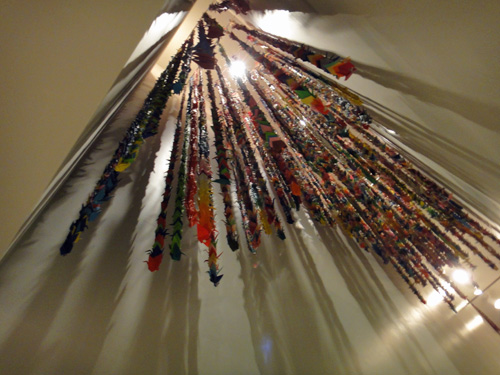
My kids are familiar with the paper cranes. The story, Sadako and the Thousand Paper Cranes ,
is one kids often hear about in school and cranes are often made and
sometimes sold to raise awareness and money for various causes. In our
school last year, students and families made paper cranes to remember
the victims of the Japanese earthquake and tsunami.
,
is one kids often hear about in school and cranes are often made and
sometimes sold to raise awareness and money for various causes. In our
school last year, students and families made paper cranes to remember
the victims of the Japanese earthquake and tsunami.
Downstairs, there were many pictures of the planned memorial site.
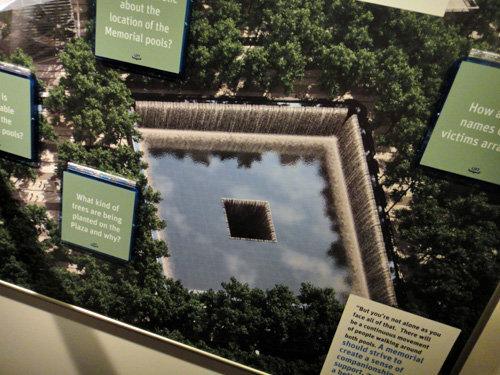
This one had many interactive flaps that helped kids think about the memorial and what it is meant to symbolize. One flap asked, "What kind of trees are being planted on the Plaza and why?"
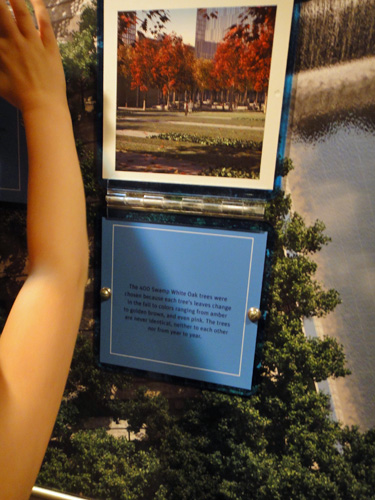
The answer: "The 400 Swamp White Oak trees were chosen because each tree's leaves change in the fall to colors ranging from amber to golden brown, and even pink. The trees are never identical, neither to each other nor from year to year." The 9/11 memorial website explains that the trees were selected from areas around New York, Pennsylvania, and Washington, D.C. The Swamp White Oaks with their unique colors reveal the individuality of each individual tree and each individual life memorialized here.
Another striking artifact in the gallery was this tree collage.
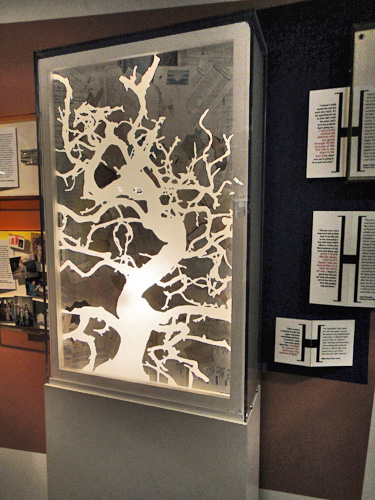
The image could be an explosion, it could be cracks, but the artist explains that it is meant to be the form of a tree. The tree is made from light filtering through empty space left between a collage of papers. These are papers that the artist found littering the ground two days after the collapse of the Twin Towers.
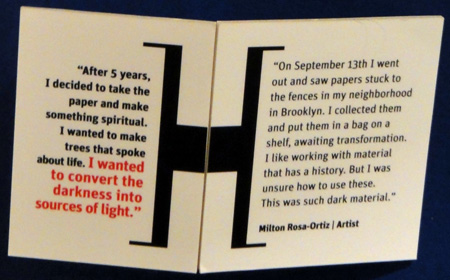
For some more words from the artist, check out this article about artifacts in the Tribute WTC exhibit.
The Tribute WTC website also has many education and teacher resources and a thoughtful Q&A page about how to discuss 9/11 with students. You can also follow the progress of construction on the new One World Trade Center building at The New World Trade Center: Rebuilding the Future, a website by the Port Authority of New York and New Jersey.

I hadn't been down here since I went to the restaurant at the top of one of the Twin Towers back in the late 1980s. I didn't know anything about the plans for the new memorial. Not only are they building several new skyscrapers here, including One World Trade Center which is shown above and is about 2/3 complete, but they're constructing a beautiful plaza full of trees. You can see a picture of what it will look like on the canvas covering the fence in the picture above. And here's an animation from the 9/11 Memorial website (click on "9/11 Memorial" or "2008 Animation"):
Giant waterfall features have been built in the spaces where the two original towers stood and the entire space around them will be filled with trees. The website says that there will be over 400 trees on the 8 acre plaza and they will symbolize "hope and renewal." Check out some images of how it will look when the trees are grown and in bloom on their gallery page. Like Central Park, this will be a huge green area surrounded entirely by tall buildings. I feel like the trees bring the city back to a human scale and are a perfect way to establish a space where the human beings who died at the World Trade Center in 1993 and 2001 and at the Pentagon and in Pennsylvania can be remembered.
The memorial won't open to the public until September 12th, so we visited an exhibit a few blocks away called Tribute WTC: Person to Person History. Here we read about the neighborhood before the attacks and saw images and heard stories of what happened that day 10 years ago. I have to say that we hurried through this section, because it was our sons' (who are 10) first time looking at some of these images ever and a little really went a long way. We spent most of our time in the lower gallery where there was information about the memorial and artwork that kids and people had made to remember. Hanging over the stairs leading down to the downstairs gallery are 10,000 folded paper cranes made by Japanese families and friends of the Fuji Bank employees killed in the attack.

My kids are familiar with the paper cranes. The story, Sadako and the Thousand Paper Cranes
Downstairs, there were many pictures of the planned memorial site.

This one had many interactive flaps that helped kids think about the memorial and what it is meant to symbolize. One flap asked, "What kind of trees are being planted on the Plaza and why?"

The answer: "The 400 Swamp White Oak trees were chosen because each tree's leaves change in the fall to colors ranging from amber to golden brown, and even pink. The trees are never identical, neither to each other nor from year to year." The 9/11 memorial website explains that the trees were selected from areas around New York, Pennsylvania, and Washington, D.C. The Swamp White Oaks with their unique colors reveal the individuality of each individual tree and each individual life memorialized here.
Another striking artifact in the gallery was this tree collage.

The image could be an explosion, it could be cracks, but the artist explains that it is meant to be the form of a tree. The tree is made from light filtering through empty space left between a collage of papers. These are papers that the artist found littering the ground two days after the collapse of the Twin Towers.

For some more words from the artist, check out this article about artifacts in the Tribute WTC exhibit.
The Tribute WTC website also has many education and teacher resources and a thoughtful Q&A page about how to discuss 9/11 with students. You can also follow the progress of construction on the new One World Trade Center building at The New World Trade Center: Rebuilding the Future, a website by the Port Authority of New York and New Jersey.
